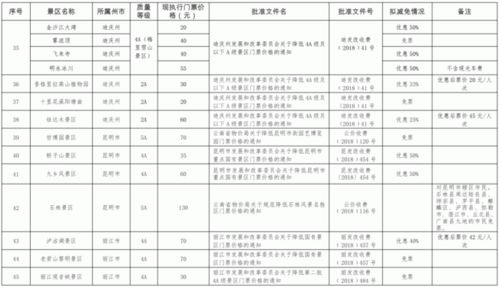旅游景点门票定价依据
Title: Determining Ticket Prices for Tourist Attractions
In the tourism industry, setting the right price for tickets to attractions is crucial for both profitability and visitor satisfaction. Several factors influence how tourist attractions determine their ticket prices. Let's delve into the key considerations:
1. Operating Costs and Revenue Goals:
Attractions need to cover their operating expenses such as staff salaries, maintenance, utilities, and marketing costs.
Revenue goals play a significant role. Attractions may aim for profit maximization or simply aim to cover costs while providing a public service.
2. Demand Analysis:
Understanding demand is critical. Attractions often conduct market research to gauge the price sensitivity of their target audience.
Peak seasons, holidays, and special events may warrant higher prices due to increased demand.
3. Value Perception:
Visitors assess the value they receive relative to the ticket price. Factors like uniqueness, reputation, historical significance, and quality of experience influence this perception.
Premium attractions can justify higher prices if they offer exceptional experiences or exclusive amenities.
4. Competitive Pricing:
Attractions need to consider prices charged by similar attractions in the region. Being overpriced might drive visitors away, while being too cheap could imply lower quality.
Differentiation strategies, such as offering unique experiences, can justify higher prices even if competitors offer similar attractions.
5. Segmentation and Pricing Tiers:
Segmenting the market based on visitor demographics and preferences allows attractions to offer tiered pricing.
For example, offering discounts for children, seniors, students, or local residents can attract a wider audience.
6. Seasonal and TimeBased Pricing:
Dynamic pricing strategies involve adjusting ticket prices based on demand fluctuations throughout the day, week, or year.

Offpeak pricing encourages visitation during less busy times, balancing crowd distribution and maximizing revenue.
7. Accessibility and Inclusivity:
Pricing should consider accessibility and inclusivity to ensure that a diverse range of visitors can afford to visit.
Offering discounted or free tickets to underserved communities or implementing slidingscale pricing can enhance accessibility.
8. Bundling and AddOns:
Attractions often offer bundled tickets combining entry with additional services like guided tours, souvenirs, or dining options.
This approach enhances the visitor experience while increasing overall revenue per guest.
9. Feedback and Iteration:
Continuous feedback from visitors, reviews, and data analysis informs pricing adjustments.
Attractions should be agile in responding to changing market conditions and visitor preferences.
Conclusion:
Setting ticket prices for tourist attractions requires a delicate balance between covering costs, maximizing revenue, and providing value to visitors. By considering factors such as operating costs, demand analysis, value perception, competition, segmentation, and accessibility, attractions can develop pricing strategies that optimize both financial performance and visitor satisfaction. Regular evaluation and adjustment based on feedback and market dynamics are essential to ensure continued success in the tourism industry.
*Remember, the goal is not just to sell tickets, but to create memorable experiences that keep visitors coming back.*








评论